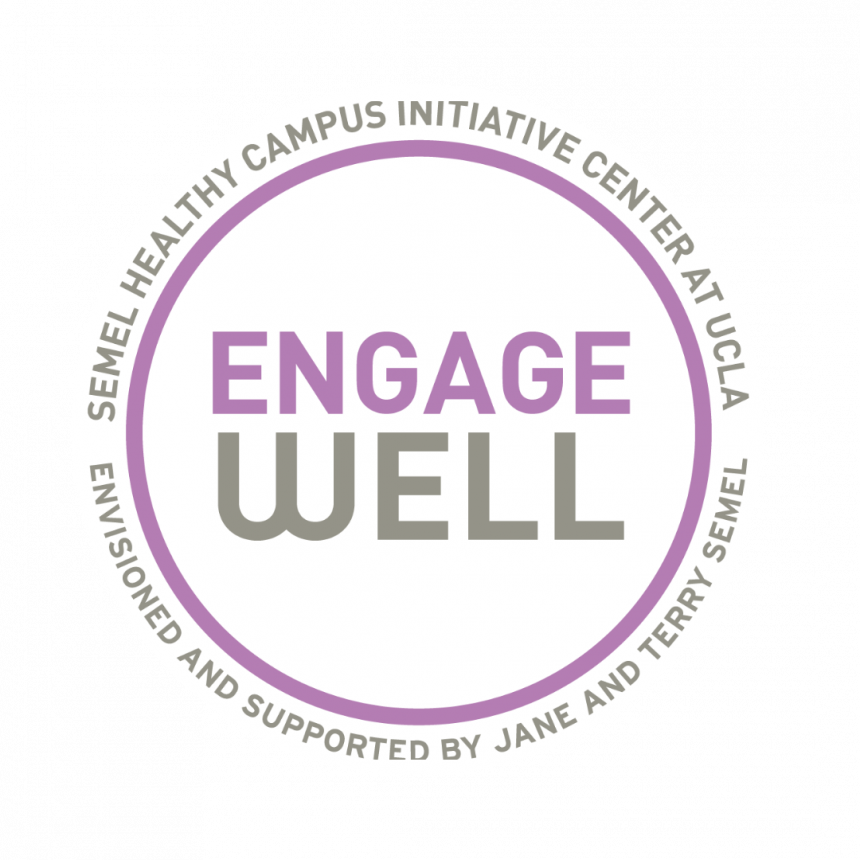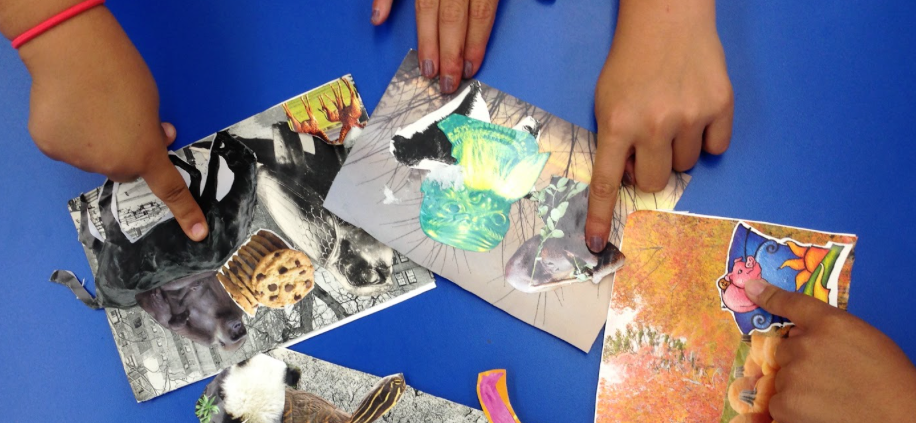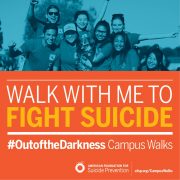Creativity & the Arts in Healing
10-year-old Kara makes a collage featuring a large bird standing on a branch of a barren tree with an arrow pointing its beak towards a strawberry, while a smaller bird stands on an opposite branch looking up towards a raspberry.
Using a structured fill-in-the-blank bio poem, she writes from the voice of the bird:
I am a little birdie.
I wonder if my mom’s going to survive, because she has a cut wing.
I hear my mom crying.
I see my dinner.
I want my mom to be healed.
I am a little birdie.
Creative expression reveals what is inside us. It invites reflection that can lead to self-discovery, connection, and empowerment. The universality and non-verbal essence of the arts transcends traditional barriers of culture and ability. Moreover, shared creative experiences provide an organic opportunity for self-revelation, meaningful dialogue, and the development of empathy.
An elementary school counselor shared her insights in working with a group of 5th graders, after receiving a UCLArts & Healing training in Beat the Odds, which integrates activities from group drumming and group counseling to build social-emotional skills:
“I used the one drum that I had to talk about problems and had kids give information verbally and with rhythm on the drum. The kids loved it. I noticed improvements in behavior with a greater sense of cooperation between them. Those who were shy or acting out would bring out each other’s qualities . . . to level each other out. Some of these children, if put together previously, would have been fighting. Then they became a group, and you don’t beat up a member of your group.”
What tools can address emotional turmoil and social divisions as efficiently, cost effectively, and sustainably as the arts?
Traumatic stress responses inhibit speech center activity in the brain, which interferes with our ability to articulate what we are thinking and feeling.1 They also inhibit rational brain functions of sequential thinking, decision–making, and social behavior. On the other hand, when under stress, we are evolutionarily wired for activity in visual, movement, and sound centers of the brain for self-protection. Therefore, non-verbal pathways for self-expression and engagement can be useful in addressing trauma.
Unlike other healing modalities, the arts are also uniquely capable of enhancing positive emotions, particularly when the focus is on process over product.2 Furthermore, active participation in the arts engages large areas of the brain, which quite literally crowds out stress, grief, and pain.3
How can you bring these practices to your community, school, workplace, or home?
At UCLArts and Healing, we maximize the innate benefits of the arts by integrating them with mental health practices, such as nonjudgmental language that invites dialogue. For sustainability, we offer professional development with scripted materials that anyone can use with a variety of populations, in a variety of settings. We also teach others how to develop their own supportive curricula through our Certificate Program in Social Emotional Arts. Our vision is to offer effective programs across the lifespan that can be implemented in school, health care, and recreational settings, where nearly everyone visits.
We invite everyone to attend our inaugural, experiential conference on Creativity & the Arts in Healing from Thursday, March 30th through Sunday, April 2nd, 2017 at the Hilton Los Angeles Airport. Learn arts-based tools for facilitating communication, building connection, promoting positive emotions, fostering engagement, reducing stress, and managing the impact of trauma. Choose from 125+ workshops delivered by leading national experts in art, dance, drama, drumming, music, and writing integrated with mental health practices. Select any one or combination of days. Over 30 continuing education credits are available. Sponsored in partnership with the Expressive Therapies Summit. To register: expressivetherapiessummit.la
Written by Ping Ho, MA, MPH, Founder and Director, UCLArts & Healing

—————-
1 van der Kolk BA. The Body Keeps the Score. New York: Penguin Books; 2014.
2 Frederickson B. How positive emotions heal. Keynote lecture presented at: International Research Congress on Integrative Medicine and Health; May 16, 2012; Portland, OR.
3 Tramo MJ. Biology and music: music of the hemispheres. Science. 2001;291(5501); 54-56.




